• All-welded Egli-pattern frame • Comet 500cc single, 4-speed Burman gearbox • Polished alloy cases, covers, caps, etc. • Telescopic forks, twin rear shocks At first, it's fair to say, Fritz Egli did not endear himself to the Vincent faithful. A Swiss racer, Egli was putting life and limb at risk in hillclimb events popular in Europe. These did not take place on the dirt slopes familiar to "slant artists" in the U.S., but rather were flat-out timed runs up closed-off public mountain roads. His Vincent Rapide's sketchy handling on the limit, he had to admit, was keeping Egli from better placings – blasphemous thoughts for fans of the vaunted Stevenage classics. Fitment of Matchless telescopic forks helped a little, but the real problem was the Vincent's frame, especially the bolted-on rear section. Serious speed would require an all-new frame. Egli began with a large-diameter backbone that also served as oil tank, to which of short, straight tubes were artfully welded, incorporating a conventional twin-shock swingarm. Instant success, as Egli gunned his creation to the 1968 Swiss Hillclimb Championship! An Egli-Vincent would take the title the next three years on the trot, but with other riders in the saddle. Egli was too busy setting up a business to handle all the customer requests for replicas of his bike. Now fully accepted by the Vincent community, between 1968 and 1972 Egli turned out perhaps 100 bikes in both race and street trim, before turning his attention to Japanese four-cylinder engines Demand for Egli-Vincents remained high so specialist shops filled the void, including CTG Racing, run by Cyril Malem out of Wimborne, Dorset in southwest England. This CTG Egli special is unique in that it uses a 500cc Vincent Comet single for power instead of the usually seen Rapide or Shadow V-twin. Besides the "missing" cylinder, the singles differed from the twins in their use of a gearbox separate from the engine, here a four-speed Burman. This had the advantages of allowing easy changes of transmission for competition use, and also resulted in a lighter, narrower package. A further advantage of the Comet design was its use of engine internals from the twin; as a result, bottom-end problems are markedly less common with the single. In a nod to the engine's heritage, this Egli's frame, sculpted steel gas tank and other cycle parts were painted Chinese Red, an optional Vincent color. A quick visual scan around the chassis reveals café-worthy items such as a BSA/Triumph conical rear hub, Norton Atlas front brake and Akront alloy rims. In the same collection as the Triumphs on offer here, it has always been well kept and gets ridden several times a year. Thanks to machines like this, today Egli-Vincent is widely regarded as a marque in its own right, a fitting and enduring legacy for Mr. Egli.
• All-welded Egli-pattern frame • Comet 500cc single, 4-speed Burman gearbox • Polished alloy cases, covers, caps, etc. • Telescopic forks, twin rear shocks At first, it's fair to say, Fritz Egli did not endear himself to the Vincent faithful. A Swiss racer, Egli was putting life and limb at risk in hillclimb events popular in Europe. These did not take place on the dirt slopes familiar to "slant artists" in the U.S., but rather were flat-out timed runs up closed-off public mountain roads. His Vincent Rapide's sketchy handling on the limit, he had to admit, was keeping Egli from better placings – blasphemous thoughts for fans of the vaunted Stevenage classics. Fitment of Matchless telescopic forks helped a little, but the real problem was the Vincent's frame, especially the bolted-on rear section. Serious speed would require an all-new frame. Egli began with a large-diameter backbone that also served as oil tank, to which of short, straight tubes were artfully welded, incorporating a conventional twin-shock swingarm. Instant success, as Egli gunned his creation to the 1968 Swiss Hillclimb Championship! An Egli-Vincent would take the title the next three years on the trot, but with other riders in the saddle. Egli was too busy setting up a business to handle all the customer requests for replicas of his bike. Now fully accepted by the Vincent community, between 1968 and 1972 Egli turned out perhaps 100 bikes in both race and street trim, before turning his attention to Japanese four-cylinder engines Demand for Egli-Vincents remained high so specialist shops filled the void, including CTG Racing, run by Cyril Malem out of Wimborne, Dorset in southwest England. This CTG Egli special is unique in that it uses a 500cc Vincent Comet single for power instead of the usually seen Rapide or Shadow V-twin. Besides the "missing" cylinder, the singles differed from the twins in their use of a gearbox separate from the engine, here a four-speed Burman. This had the advantages of allowing easy changes of transmission for competition use, and also resulted in a lighter, narrower package. A further advantage of the Comet design was its use of engine internals from the twin; as a result, bottom-end problems are markedly less common with the single. In a nod to the engine's heritage, this Egli's frame, sculpted steel gas tank and other cycle parts were painted Chinese Red, an optional Vincent color. A quick visual scan around the chassis reveals café-worthy items such as a BSA/Triumph conical rear hub, Norton Atlas front brake and Akront alloy rims. In the same collection as the Triumphs on offer here, it has always been well kept and gets ridden several times a year. Thanks to machines like this, today Egli-Vincent is widely regarded as a marque in its own right, a fitting and enduring legacy for Mr. Egli.
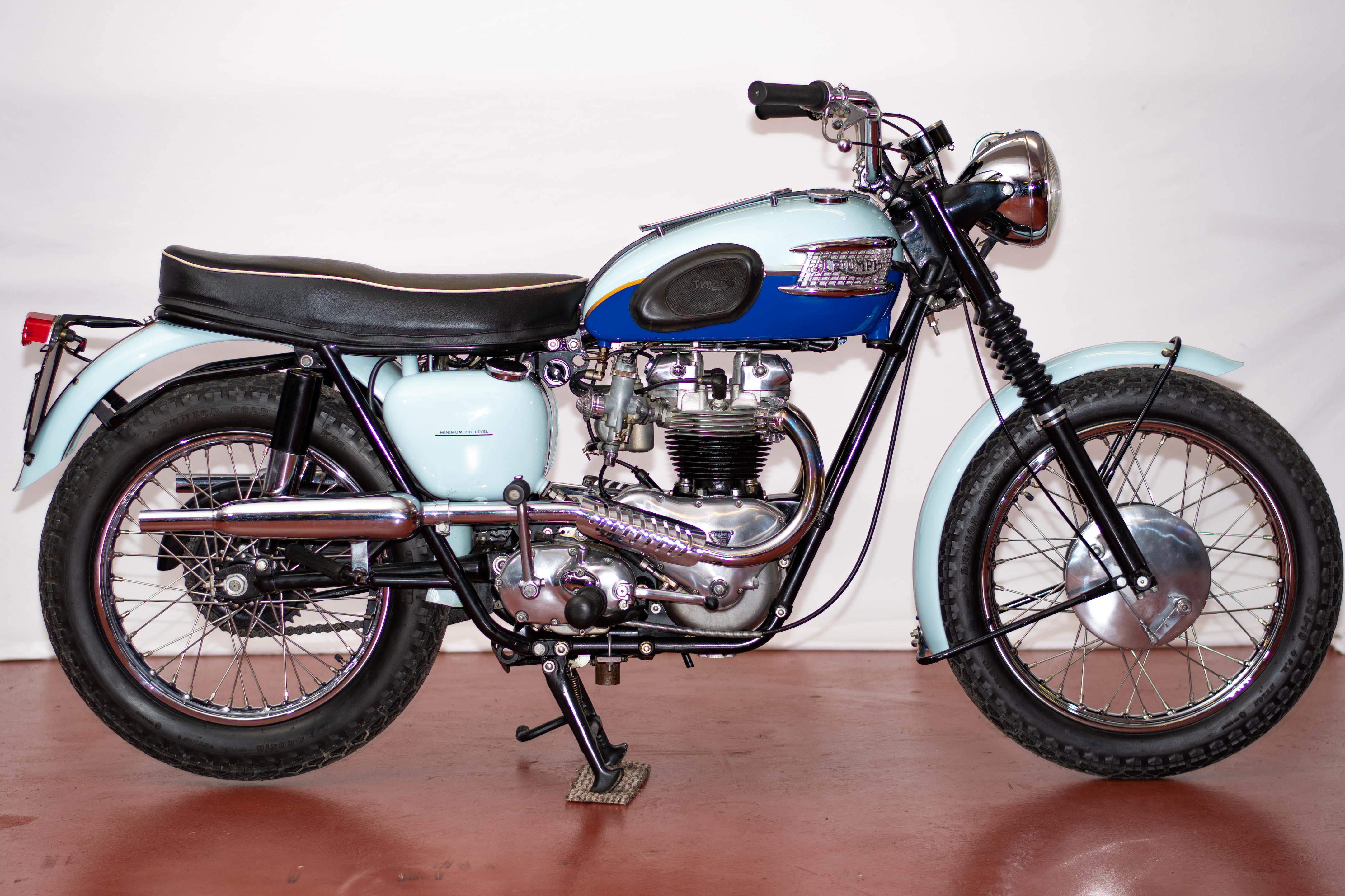
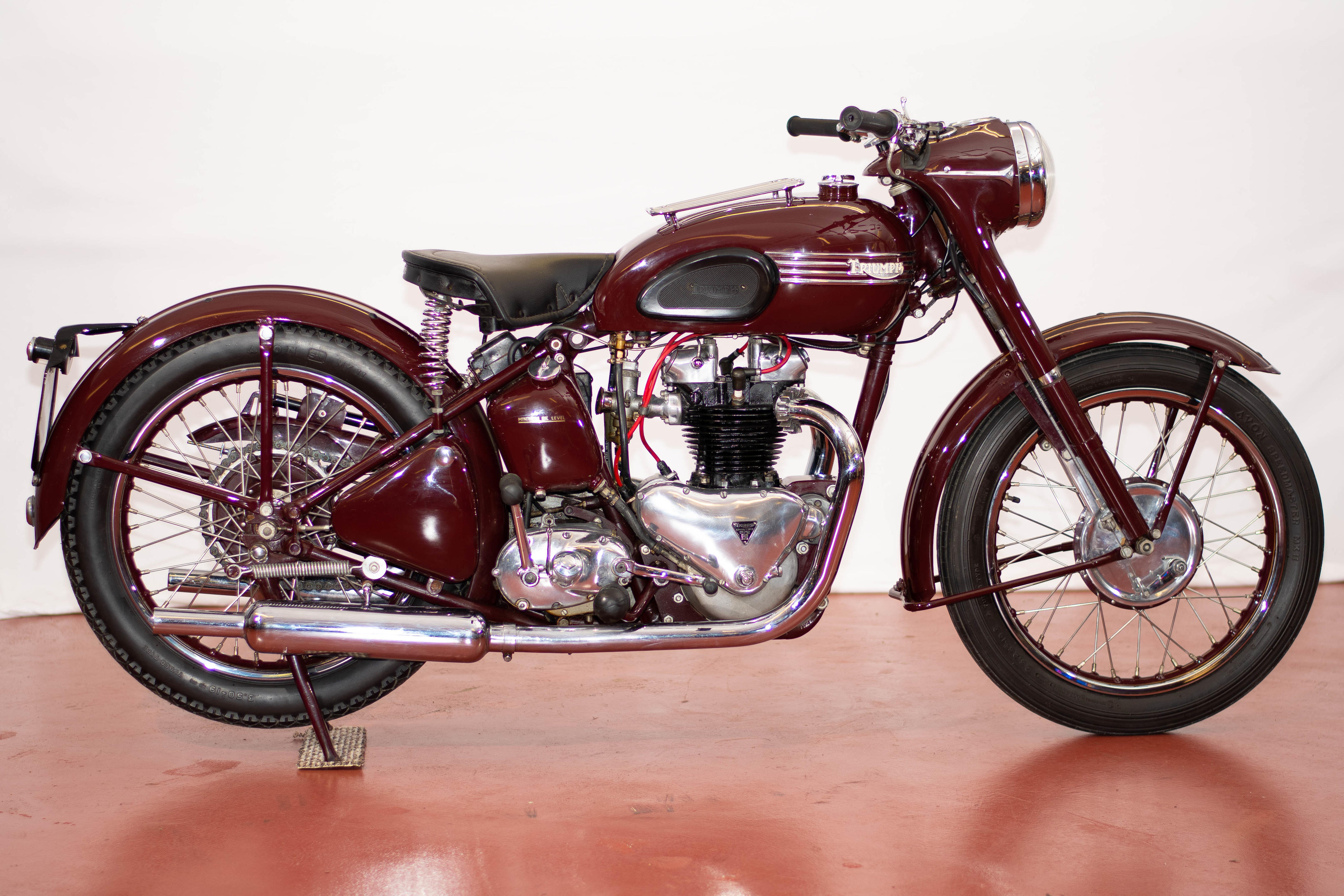

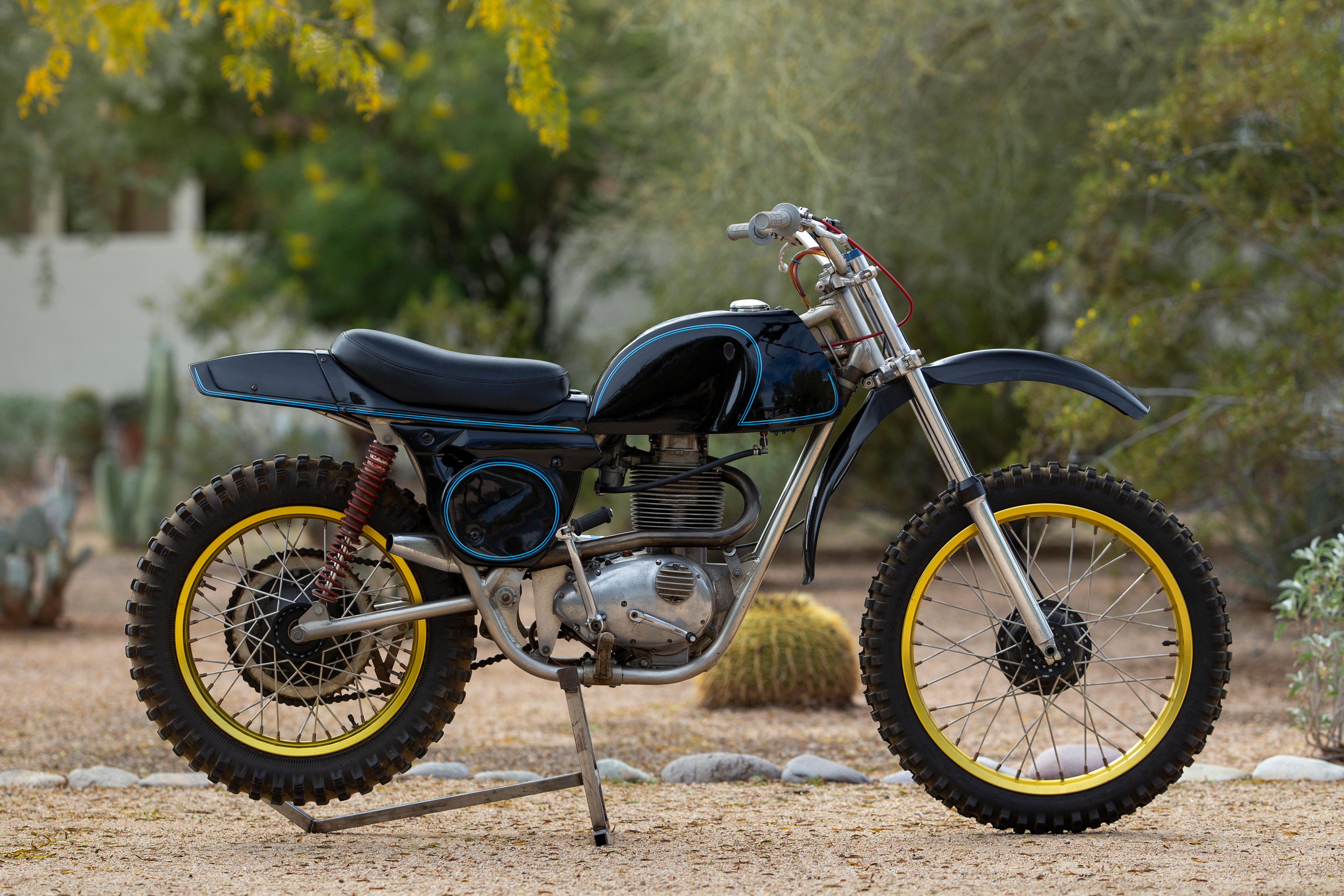
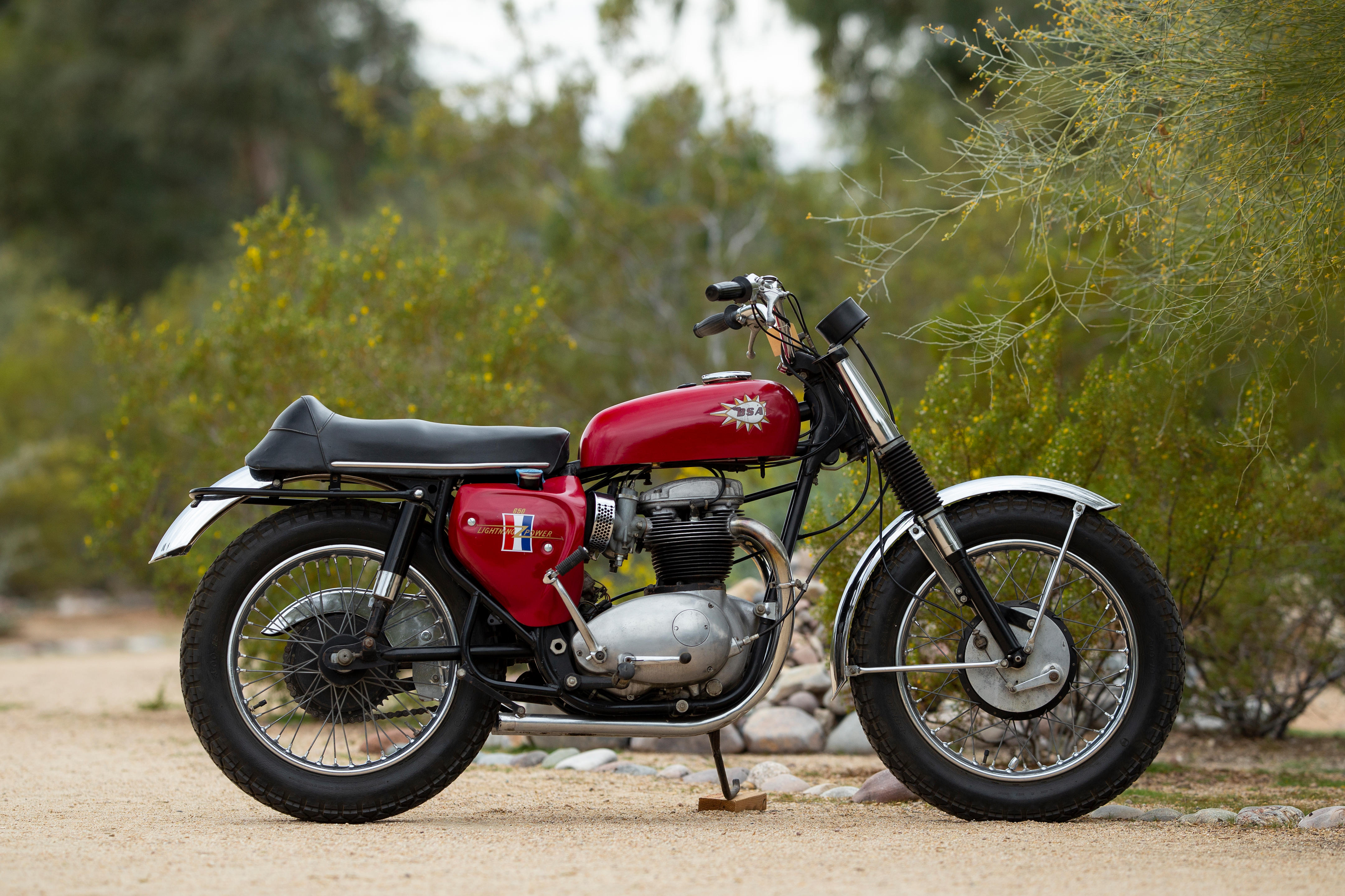

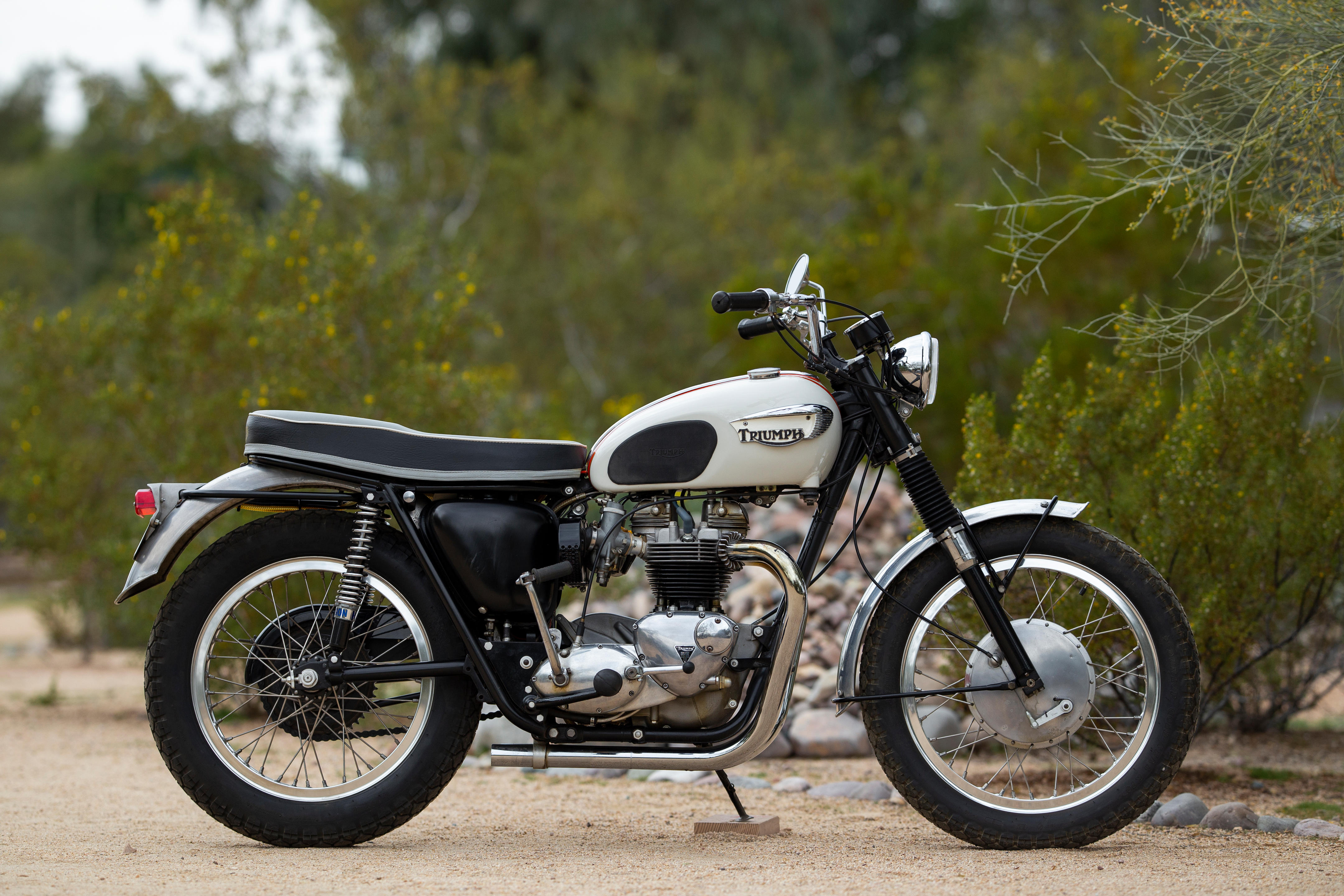
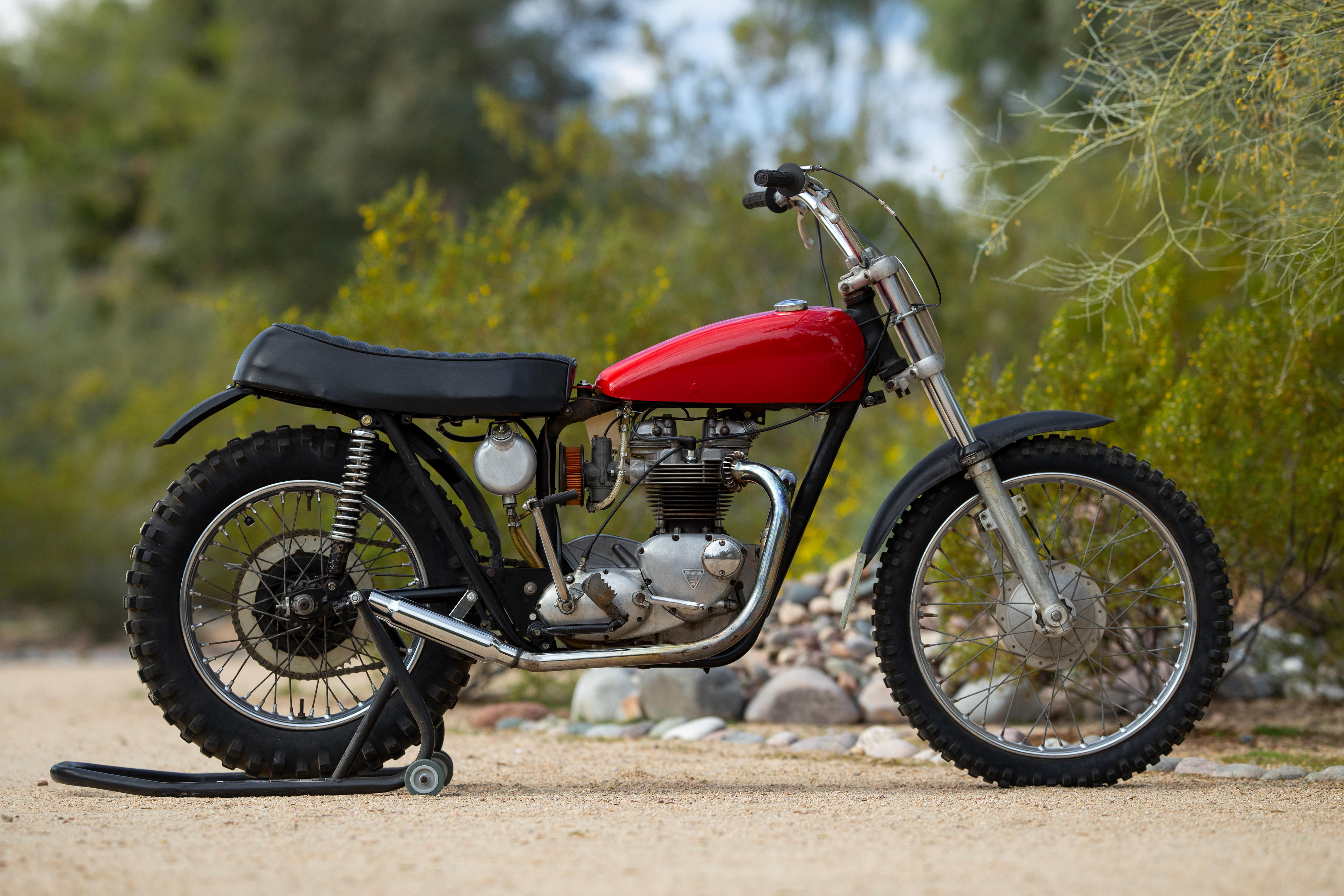
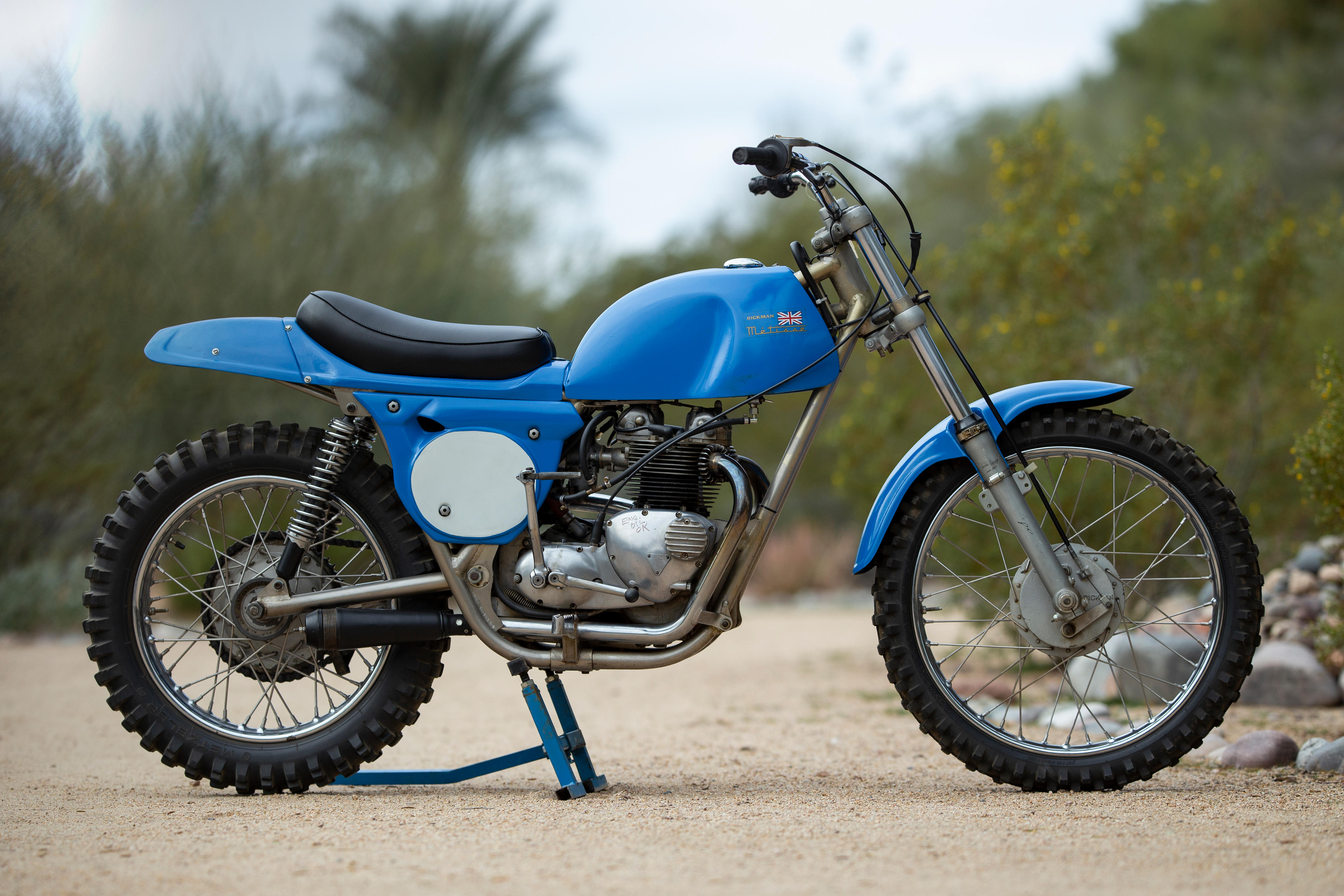
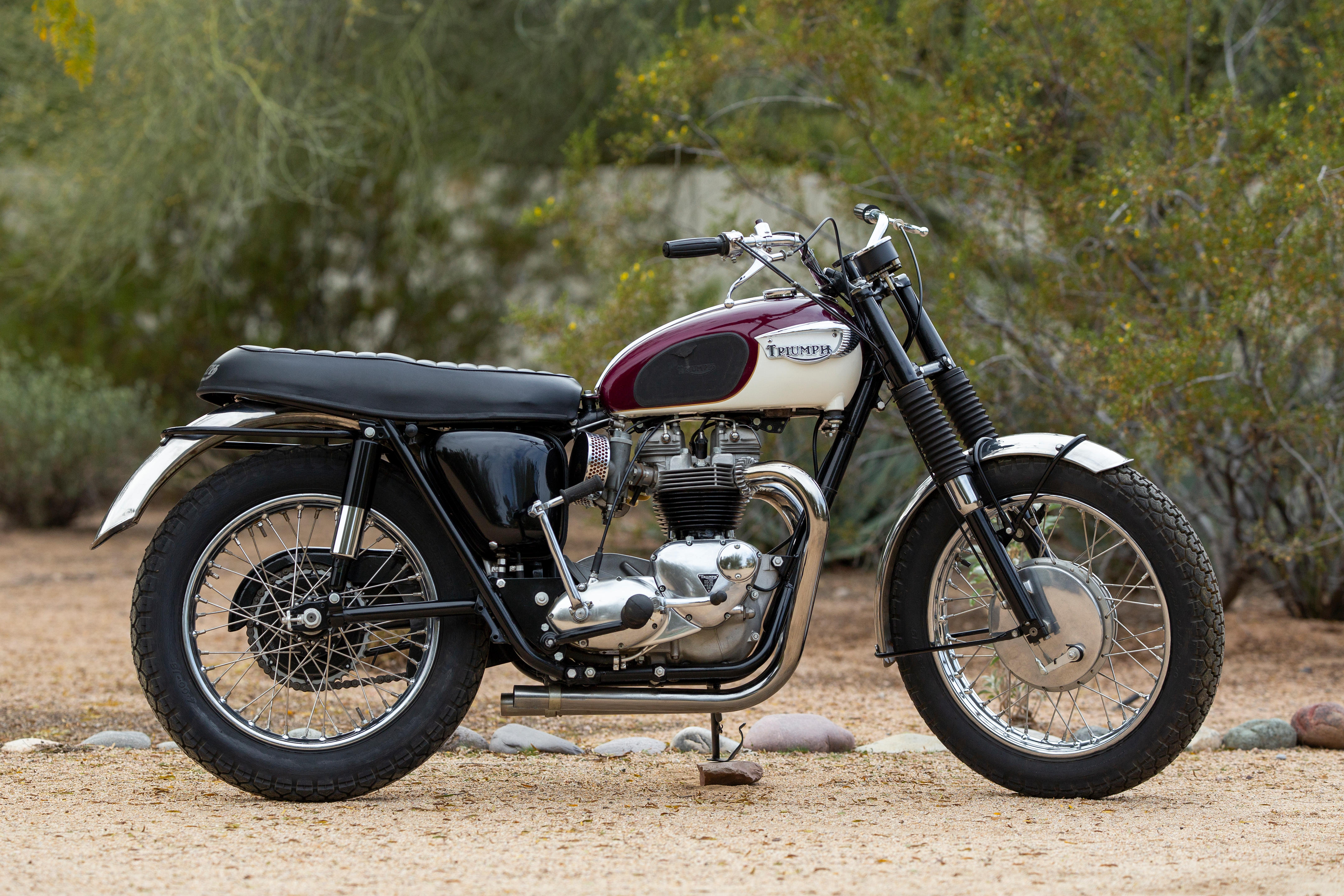
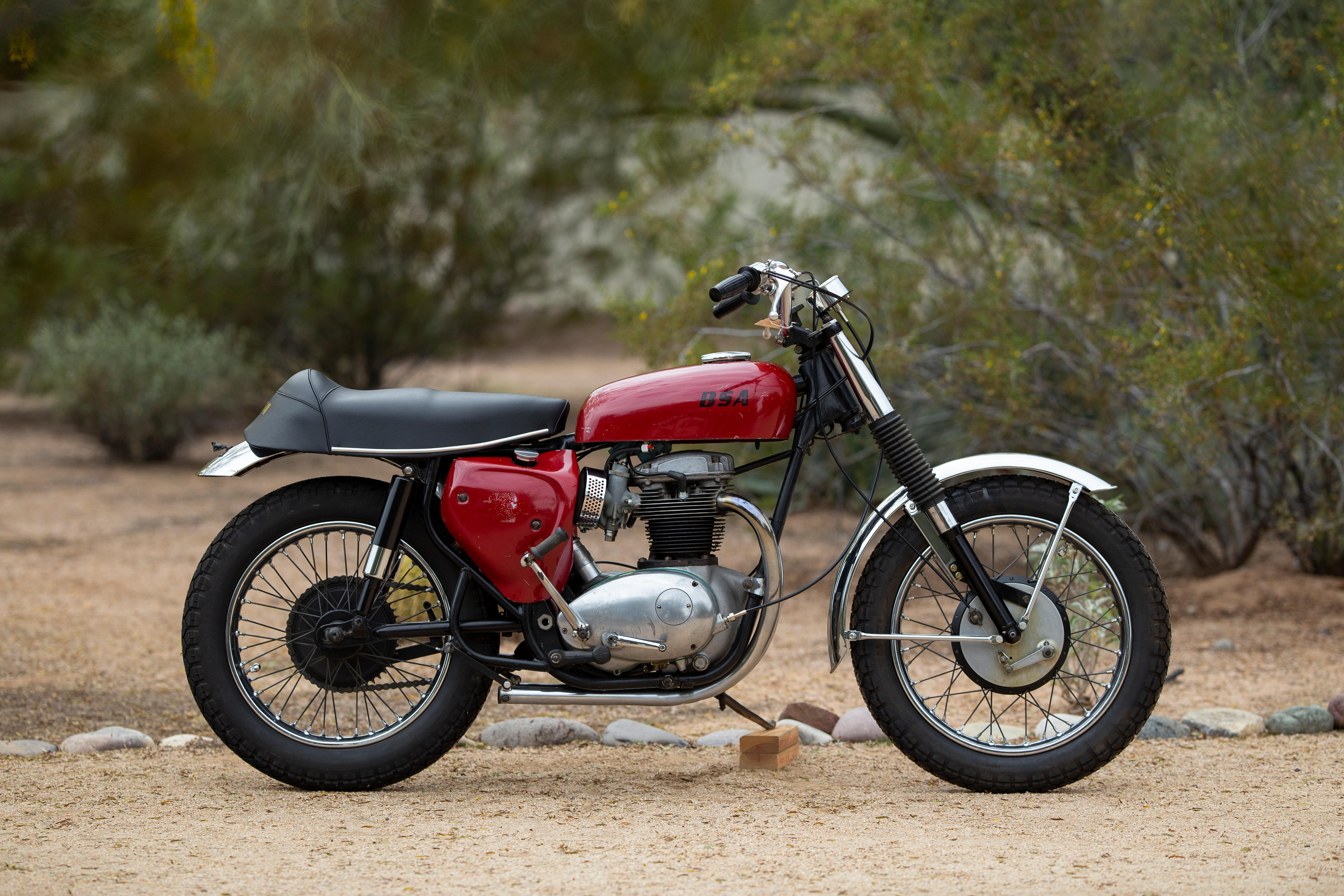
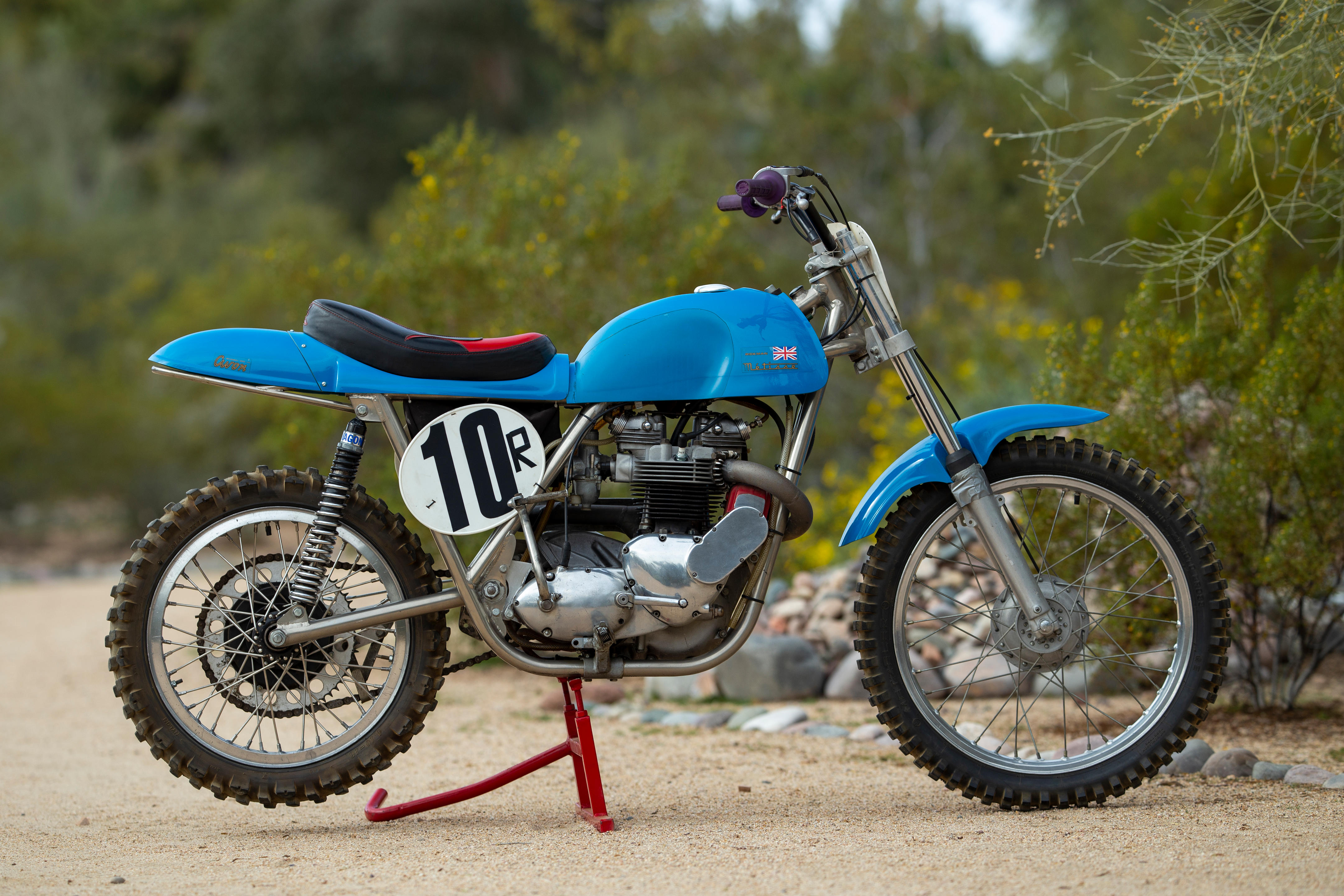
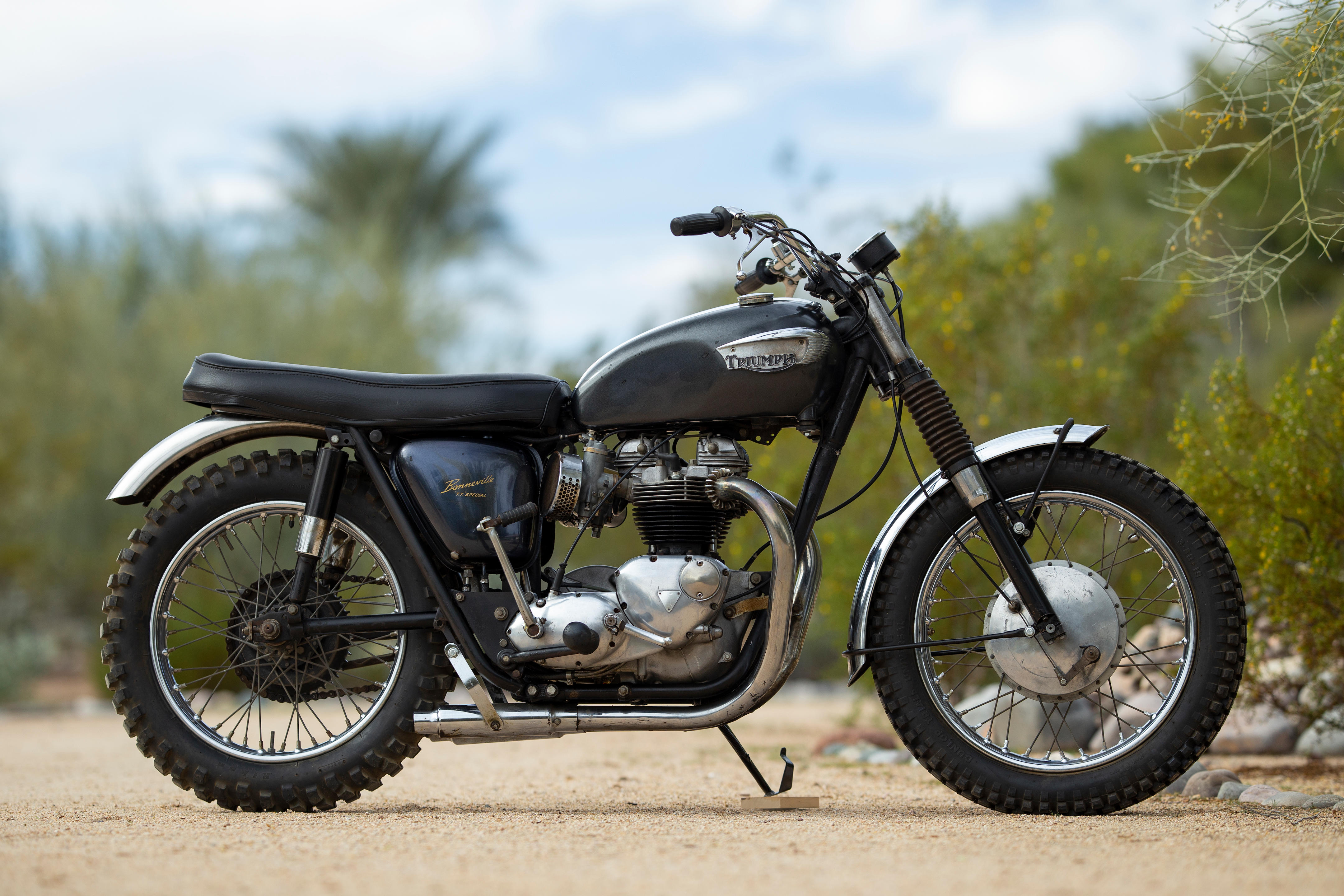


Testen Sie LotSearch und seine Premium-Features 7 Tage - ohne Kosten!
Lassen Sie sich automatisch über neue Objekte in kommenden Auktionen benachrichtigen.
Suchauftrag anlegen